-
Par MissGuillotine le 19 Juillet 2014 à 21:13
20 July 1189 – Richard I of England officially invested as Duke of Normandy.
1304 – Wars of Scottish Independence: Fall of Stirling Castle – King Edward I of England takes the stronghold using the War Wolf.
1387 – Death of Robert IV of Artois, Count of Eu

1398 – Death of Roger Mortimer, 4th Earl of March
1454 –Death of John II of Castile
1524 – Death of Queen Claude of France
She was queen consort of France and duchess regnant of Brittany. She was the eldest daughter of Louis XII of France (First husband of Mary Tudor) and Anne of Brittany, as well as the first spouse of Francis I of France.
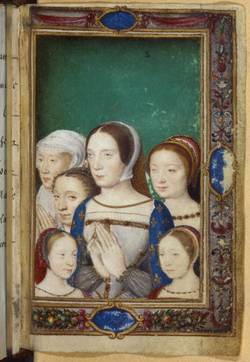
1528- THE DIVORCE.
Notarial attestation of the presentation to the Pope, on 20 July, 1528, 5 Clement VII., by John Anthony Musettula, nobleman of Naples, and imperial ambassador to his Holiness, of a petition and protestation, in behalf of queen Katharine, to the following effect.
Hears that the Pope intends to send cardinal Campeggio to England to determine the pretended suit by which the King intends to annul his marriage. Prays his Holiness to forbid the suit, and impose perpetual silence, as the marriage was contracted in accordance with an apostolic ordinance, and consummated by the cohabitation of many years and the birth of children. Wars between Christian princes will be the result. It is intended to separate what God has joined, mutual will has confirmed, and the Holy See has ratified; to impugn the decrees of the Roman church, and restrain the Pope's power. The enemy of man will profit much from this seed of wickedness and discord. No marriages will be secure if this is dissolved. The cause should on no account be decided, except at the court of Rome, because of its importance, and because it turns upon the interpretation of a papal dispensation. Least of all should it be determined in England, where the Queen fears the power of the King, and there will be no security for her defence. In his Holiness's court she is ready to show her rights.
The Legates are much suspected, especially the cardinal of York, who is chancellor of England, and councillor and vassal to the King, and has often urged the Pope to grant the King's request about this matter. Petitions his Holiness therefore to revoke all commissions to try the cause away from Rome, and appeals to his tribunal in the name of the Queen and of the Emperor. Protests that as she is in England, and in her husband's power, no acts executed by her concerning the place or mode of trial must be understood to the prejudice of her rights.
Viterbo, "in ædibus S. Sixti," where the Pope resides. Witnesses: Peter Ruiz de Alacron (sic), of Spain, and Julian Visconti, clerk, of Milan.
Attested by Baldus de Nigris, of Civita Nova, in the diocese of Fermo, notary of the Apostolic Chamber.
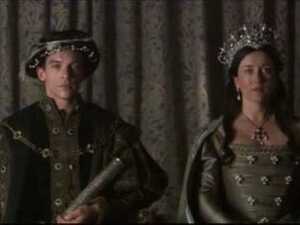
1535-Vice-Chancellor and University of Cambridge to Anne Boleyn
Beg her to remit the payment of tenths and first-fruits on account of the poverty of the persons who will have to pay these dues and of the colleges. Cambridge, 20 July.
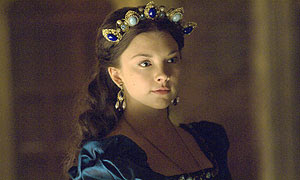
1554 - Philip II of Spain arrived in England

1554 - John Knox published “A Faithful Admonition to the Professors of God’s Truth in England”.

1603-Sir Walter Raleigh is imprisoned in the Tower of London.
source:http://www.british-history.ac.uk/,wikipedia
-
Par MissGuillotine le 18 Juillet 2014 à 22:03
19 July 1415 – Death of Philippa of Lancaster

1543-Death of Mary Boleyn

She was the sister of Anne Boleyn and a member of the Boleyn family, which enjoyed considerable influence during the reign of King Henry VIII of England. Some historians claim she was Anne's younger sister, but her children believed Mary was the elder, as do most historians today.
Mary was one of the mistresses of Henry VIII, from a period of roughly 1521 to 1526. It has been rumoured that she bore two of the king's children, though Henry did not acknowledge either of them as he had done with Henry FitzRoy, his son by Bessie Blount. Mary was also rumoured to have been a mistress of Henry VIII's rival, King Francis I of France, for some period between 1515 and 1519.She was the maternal aunt of Queen Elizabeth I of England.
Mary Boleyn was married twice: in 1520 to William Carey, and secretly in 1534, the year after sister Anne married the king, to William Stafford, a soldier of good family but few prospects. This secret marriage to a man considered beneath her station angered both Henry VIII and her sister, Queen Anne, and resulted in Mary's banishment from the royal court; she spent the remainder of her life in obscurity, dying seven years after sister Anne's execution.

1545 – The Tudor warship Mary Rose sinks off Portsmouth; in 1982 the wreck is salvaged in one of the most complex and expensive projects in the history of maritime archaeology.

1551 - Marriage arranged between Henry II of France's daughter Elizabeth and Edward VI

1553 – Lady Jane Grey is replaced by Mary I of England as Queen of England after only nine days on the throne.

1584 - Death of Robert Dudley, Baron Denbigh, son of Robert Dudley, Earl of Leicester, and Lettice Knollys

1596 - Death of Sir Francis Knollys
He was a courtier in the service of Henry VIII, Edward VI and Elizabeth I, and was a member of parliament for a number of constituencies.
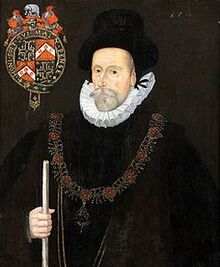
source:wikipedia
-
Par MissGuillotine le 17 Juillet 2014 à 21:08
1501 –Birth of Isabella of Austria

1509 - Edmund Dudley convicted of treason.
Edmund Dudley was an English administrator and a financial agent of King Henry VII. He served as Speaker of the House of Commons and President of the King's Council. After the accession of Henry VIII, he was imprisoned in the Tower of London and executed the next year on a treason charge. While waiting for his execution he wrote The Tree of Commonwealth.
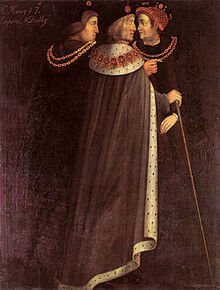
1536- Bonds held by Anne Boleyn.
Receipt by John Gostwyke, treasurer of the tenths and first fruits, from Rafe Sadeler, groom of the Privy Chamber, of the following obligations:—1. A bond of Edm. Harvy to Sir Jas. Bullayne, chancellor to the late queen Anne, and Geo. Taylor, her receiver, in 100 mks., 17 Dec. 20 Hen. VIII. 2. Bond of John Asteley, Edm. Harvy, and Hen. Lumner, to Taylor, in 100l., 4 April 26 Hen. VIII. 3. Bond of lady Blanche, widow of Sir Wm. Herbert, to the late Queen, in 40 l., 14 March 27 Hen. VIII. 4. Bond of Sir Edw. Baynton to the late Queen for 200 l., 23 Dec. 27 Hen. VIII. 5. Bond of Geo. Taylor to the late Queen for 30 l., 2 June 27 Hen. VIII. 6. Bond of Eliz. Countess of Worcester to the late Queen for 100 l., 8 April 27 Hen. VIII. 7. Bond of the bp. of Worcester to the late Queen in 200 l., 18 Aug. 27 Hen. VIII. 8. Bond of lady Margaret Bryan to the late Queen in 20 l., 3 March 28 Hen. VIII. 9. Bond of Edw. Charnocke, page of the wardrobe for the robes of the late Queen, to Sir Jas. Bulleyn and Sir Edw. Baynton, in 20 l., 2 April 25 Hen. VIII. 10. Bond of Nic. Shaxton, bp. of Salisbury, to the late Queen in 200 l., 13 March 20 Hen. VIII.—18 July

1552–Birth of Rudolf II, Holy Roman Emperor
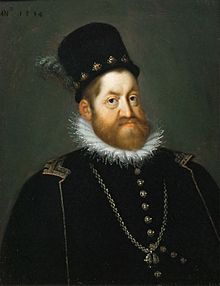
1553 – The Earls of Pembroke and Arundel persuaded council members that Mary’s claim to the throne was legitimate.
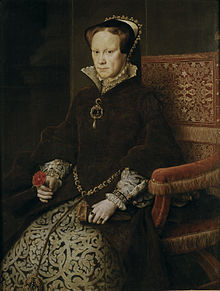
1555 – The College of Arms is reincorporated by Royal charter signed by Queen Mary I of England and King Philip II of Spain.
c

The College of Arms or Herald's College is a royal corporation consisting of professional officers of arms, with jurisdiction over England, Wales, Northern Ireland and some Commonwealth realms. The heralds are appointed by the British Sovereign and are delegated authority to act on her behalf in all matters of heraldry, the granting of new coats of arms, genealogical research and the recording of pedigrees. The College is also the official body responsible for matters relating to the flying of flags on land, and it maintains the official registers of flags and other national symbols. Though a part of the Royal Household of the United Kingdom the College is self-financed, unsupported by any public funds.
Founded by royal charter in 1484 by King Richard III, the College is one of the few remaining official heraldic authorities in Europe. Within the United Kingdom, there are two such authorities, the Court of the Lord Lyon in Scotland and the College for the rest of the United Kingdom. The College has had its home in the City of London since its foundation, and has been at its present location on Queen Victoria Street since 1555. The College of Arms also undertakes and consults on the planning of many ceremonial occasions such as coronations, state funerals, the annual Garter Service and the State Opening of Parliament. Heralds of the College accompany the sovereign on many of these occasions.
The College comprises thirteen officers or heralds: three Kings of Arms, six Heralds of Arms and four Pursuivants of Arms. There are also seven officers extraordinary, who take part in ceremonial occasions but are not part of the College. The entire corporation is overseen by the Earl Marshal, a hereditary office held by the Duke of Norfolk, currently Edward Fitzalan-Howard, 18th Duke of Norfolk.
1565 - Death of Katherine Ashley
She was governess to Elizabeth I and was a close friend in later life, known to the Queen as 'Kat', and it is by the name 'Kat Ashley' that she is generally known to history. She should not be confused with her niece Catherine Champernowne, mother of Sir Walter Raleigh and Sir Humphrey Gilbert

source:http://www.british-history.ac.uk/,wikipedia
-
Par MissGuillotine le 16 Juillet 2014 à 21:39
1429 – Hundred Years' War: Charles VII of France is crowned the King of France in the Reims Cathedral after a successful campaign by Joan of Arc

1453 – Death of John Talbot, 1st Earl of Shrewsbury, English commander

1517-"The christening of the Lady Frances, first begotten daughter of Charles Duke of Suffolk and Mary the French Queen."
Born at Bishop's Hatfield, Thursday, 17 July 1517, 9 Hen. VIII., between 2 and 3 in the morning. Christened on Saturday following. The road to the church was strewed with rushes; the church porch hung with rich cloth of gold and needlework; the church with arras of the history of Holofernes and Hercules; the chancel, with arras of silk and gold; and the altar with rich cloth of tissue, and covered with images, relics, and jewels. In the said chancel were, as deputies for the Queen and Princess, Lady Boleyn and Lady Elizabeth Grey. The Abbot of St. Alban's was godfather. The font was hung with a canopy of crimson satin, powdered with roses, half red and half white, with the sun shining, and fleur de lis gold, and the French Queen's arms in four places, all of needlework. On the way to church were eighty torches borne by yeomen, and eight by gentlemen. The basin, covered, was borne by Mr. Sturton, the taper by Mr. Richard Long, the salt by Mr. Humphrey Barnes, the chrism by Lady Chelton. Mrs. Dorothy Verney bore the young lady, was assisted by the Lord Powes and Sir Roger Pelston, and accompanied by sixty ladies and gentlemen, and the prelates Sir Oliver Poole and Sir Christopher, and other of my Lord's chaplains. She was named Frances, being born on St. Francis's day.

1529-THE DIVORCE.
Memorandum that, at the King's command, 17 July 21 Hen. VIII., John abbot of Westm., Dr. Burbank and Dr. Higgons received out of the Treasury of the Receipt four writings:—one with four seals in wooden boxes;† another, with a seal of the Spanish arms, subscribed in the Queen's hand, Katherina princeps Walliæ; another, with a little seal, endorsed, Signum indorsatum in capsa Hispaniæ Arragoniæ;† and another, sealed with the English seal, endorsed as the last. Receipt by Ric. Sampson for the four pieces from Ric. Warner, under-chamberlain of the Treasury. Signed.
P. 1. On the dorse: Receipt by Sampson for a paper relating to the treaty of marriage between Henry prince of Wales and Katherine, daughter of Ferdinand and Isabel, and a commission from Spain relating to the marriage.
1531-Chapuys to Charles V.
The Queen has kept the articles last sent from Rome till the day before yesterday, in the hope of assembling all those of her Council, which she has found to be impossible, and has accordingly sent them back to me. On considering them, it seems to me that there has been omitted one deduction so necessary that without it conclusive proof cannot be obtained, because the point is to show that the Queen was not known by prince Arthur, which is a general negative without restriction of time or place, a thing in law unprovable, and the presumption is against her, as she lay with the said Prince several nights, and moreover they have brought testimony here that the Prince had several times boasted of having used her like a true and vigorous husband. For these reasons, even if all the Queen's allegations were proved, as set forth in those articles, it would not amount to perfect proof, except by the Queen's oath, which could not be admitted by law in opposition to the said proofs and presumptions. It should therefore be expressly stated in articles, how the said Queen is so virtuous, devout, truthful, and God-fearing that for nothing in the world would she declare a falsehood, and that she would rather die than perjure herself to the injury of any one, especially in order to live in incest, which would be the case if those things were proved. This would do away with all the rules and presumptions of law. I write of it to Mai, and if it be approved by your Majesty's council, I beg you to write to him. We are continually endeavouring here to obtain witnesses informed of the whole case, and have got two, who depose well au possible, whom I have got examined by the Nuncio, by virtue of a secret commission from his Holiness, and the Nuncio will send their testimony with those of the other two who have already deposed.
The Queen has been for some months living in hope that the process would be settled before the re-assembling of Parliament; but now she is quite depressed, seeing that the Pope shows no good will to do her justice. Moreover, it seems that he only delays the affair to open the door to improper practices (inconvenientz). She sees also that the lady and others of that party speak with greater assurance than they used to do, and the King makes difficulties only that the cognizance of the cause may be remitted to England. He has already the opinion of the university of Orleans, as Sampson declares, that the matter should be discussed here, and that the Pope has no right to interfere with it. I think Dr. Fox will solicit those of Paris to conclude the same. I have warned your Majesty's ambassador in France to be on his guard about it, and it is more important now than when the principal article was discussed, that Mai and the others be careful to hinder their practices; for if the King obtained the decision of three or four universities, conformable to that of Orleans, the Queen's case would be half desperate, and there would be no bishop who would refuse to give sentence according to the King's wishes. The lady only allows three or four months for the nuptials. She is preparing her state royal by degrees, and has just taken an almoner and other officers. She goes along with the King to the chase; and the Queen, who used always to follow, has been commanded by the King to stay at Windsor. This very much aggravates her regret, as well because the King is so distant, as because she thinks that he will have a better opportunity of gaining the lords in those districts through which he passes, and inducing them to espouse his side in Parliament.
Yesterday he sent a post to Rome, who was to have carried a very tortuous despatch, for they detained him more than ten days, whilst they were in great deliberation about it. I thought to learn something of it from Joachin, who said to me, that, whatever fair face they show him here, they did not tell him anything, except what they thought was for their own advantage, and in the end they remained English, and he French. He has been more friendly with me than usual. I will give him occasion to continue so. He has told me that the King has several times expressed his wish for the Council, and that he will attend it in person if the place be suitable, for without the personal assistance of princes he thought it would only end in confusion; and such was the opinion of Francis. These are lessons they have rehearsed between them.
I think that the duke of Norfolk is offended that he sees no chance of your confirming or paying his pension, and he finds France more to his taste. Joachin has just given him three horses and three stags. He complains of the men of Gravelines, who want to usurp a certain piece of land within their limits. The young Marquis [Dorset] has been forbidden to go to Court for some time, because he has been charged with assembling the people of Cornwall and the neighbourhood. The Queen thinks this is an invention of the lady, because the Marquis is her humble servant. For the same reason, and to avenge herself on the duke of Suffolk, who had heretofore made some charge against her honor, the same lady has accused him of having connection with his own daughter. I know not what will follow from it.
Wishes to know if he is to correspond with the queen of Hungary, and begs he may have some vacant benefice. London, 17 July.
1540-Anne of Cleves to Henry VIII.
Thanks him for his goodness, favour, and liberality, declared by the King's own letters and the report of the Great Master, the Privy Seal and Secretary. Will ever remain his sister and servant, according to her answer made at the first opening of this matter, from which she has never varied nor will vary. If anyone has said the contrary it is without her consent. Richmond, 17 July. “sister and servant”
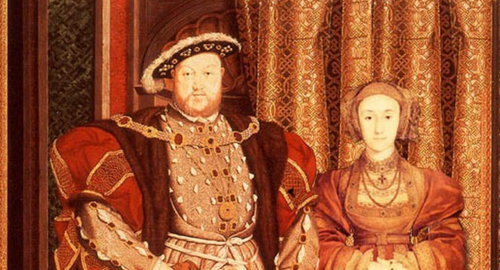
source:http://www.british-history.ac.uk/
-
Par MissGuillotine le 15 Juillet 2014 à 22:06

16 July 1377 – Coronation of Richard II of England.
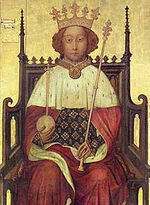
1517 - Birth of Frances Grey, Duchess of Suffolk, at Hatfield.She was the second child and eldest daughter of King Henry VIII's sister Mary,queen of France and Charles Brandon, 1st Duke of Suffolk. She was the mother of Lady Jane Grey,Catherine and Mary
She was close to her aunt Catherine of Aragon, and a childhood friend of her first cousin, the future Queen Mary I. Lady Frances received permission from the King Henry VIII to marry Henry Grey, Marquess of Dorset, in 1533. The marriage took place in Southwark.

1529-The divorce:
i. Deposition of Mary wife of Henry Bourchier earl of Essex, taken at Stanstede, on Thursday, 15 July 1529, in the presence of Robert Johnson, notary public (of Norwich diocese). Her age is 44 years and over. She says that prince Arthur and Katharine lived as man and wife together; that the two occupied the same bed after the wedding, at London House, and were generally reputed as man and wife.
ii. Deposition of Agnes widow of Thomas late duke of Norfolk, taken on Friday, 16 July 1529, in the church of St. Mary, of the Cluniac priory of Thetford, by Sampson Mychell, canon, in the presence of John [Fletcher] and [William]* Molyneux, M.A., her chaplain. Her age is 52 years and over. She knew Henry VII. and his queen Elizabeth from the time she was 15, and remembers Katharine coming from Spain, and the marriage of Arthur and Katharine in St. Paul's. "He was then about the stature that the young [earl of] Derby is now at, but not fully so high as the same Earl is." Also, that the said prince Arthur and [princess Ka]theryne, now being Queen, were brought to bed the next night after the said marriage; for this deponent did see them lie ... me in one bed the same night, in a chamber within the said palace being prepared for them, and that this deponent left them so [lying to]gether there the said night."
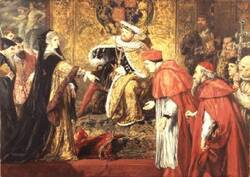
1546 - Execution of Anne Askew.
Anne Askew was an English poet and Protestant who was condemned as a heretic. She is the only woman on record known to have been both tortured in the Tower of London and burnt at the stake. She is also one of the earliest female poets to compose in the English language and the first Englishwoman to demand a divorce.Anne Askew was martyred in Smithfield, London. She was carried to execution in a chair wearing just her shift as she could not walk and every movement caused her severe pain.She was dragged from the chair to the stake which had a small seat attached to it, on which she sat astride. Chains were used to bind her body firmly to the stake at the ankles, knees, waist, chest and neck. Because of her recalcitrance she was burned alive slowly rather than being strangled first or burned quickly. Those who saw her execution were impressed by her bravery, and reported that she did not scream until the flames reached her chest. The execution lasted about an hour, and she was unconscious and probably dead after fifteen minutes or so. Prior to their death, the prisoners were offered one last chance at pardon. Bishop Shaxton mounted the pulpit and began to preach to them. His words were in vain, however. Anne listened attentively throughout his discourse. When he spoke anything she considered to be the truth, she audibly expressed agreement; but when he said anything contrary to what she believed Scripture stated, she exclaimed: "There he misseth, and speaketh without the book." She burned to death, along with three other Protestants, John Lassells, John Hemley ('a priest') and John Hadlam ('a tailor')

1557 - Death of Anne of Cleves, Queen of England from 6 January 1540 to 9 July 1540 as the fourth wife of King Henry VIII
When Anne's health began to fail, Mary I allowed her to live at Chelsea Old Manor, where Henry's last wife, Catherine Parr, had lived after her remarriage.Here, in the middle of July 1557, Anne dictated her last will. In it, she mentions her brother, sister, and sister-in-law, as well as the future Queen Elizabeth, the Duchess of Suffolk, and the Countess of Arundel.She left some money to her servants and asked Mary and Elizabeth to employ them in their households. She was remembered by everyone who served her as a particularly generous and easy-going mistress.
The cause of her death was most likely to have been cancer
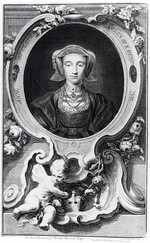
source:http://www.british-history.ac.uk/,wikipedia
 Suivre le flux RSS des articles de cette rubrique
Suivre le flux RSS des articles de cette rubrique




